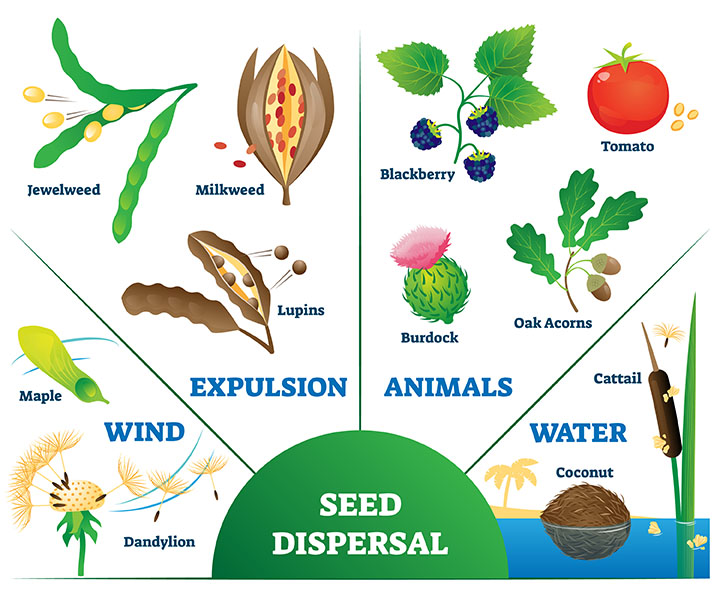

Seed dispersal is the process of moving seeds away from the parent plant. This helps to ensure that the seeds will germinate in a new location and that the plant will be able to reproduce.
There are many different ways that seeds can be dispersed. Some seeds are dispersed by wind, while others are dispersed by animals. Some seeds even have special features that help them to travel long distances, such as parachutes or hooks.
Wind dispersal is a common way for seeds to be dispersed. Seeds that are dispersed by wind are often light and have wings or hairs that help them to catch the wind. When the wind blows, the seeds are carried away from the parent plant.
Animal dispersal is another common way for seeds to be dispersed. Seeds that are dispersed by animals often have hooks or spines that help them to attach to the fur or feathers of animals. When the animal moves, the seeds are carried away from the parent plant.
Some seeds even have special features that help them to travel long distances. For example, dandelion seeds have parachutes that help them to float through the air. Coconuts have thick shells that help them to float in water.
Seed dispersal is an important process for plants. It helps to ensure that the seeds will germinate in a new location and that the plant will be able to reproduce.
The wind is an important agent of seed dispersal.

Noun:
The word "seed dispersal" is a compound word, consisting of the words "seed" and "dispersal".
The word "seed" comes from the Old English word "sæd", which also means "seed".
The word "dispersal" comes from the Latin word "dispersio", which means "scattering".
The first recorded use of the word "seed dispersal" in English was in the 19th century.
The word "seed dispersal" is an English word, and it is not related to any other languages.
Provide three examples of seed dispersal.